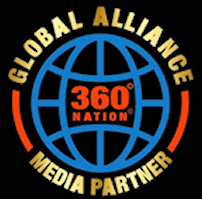ISO 26000 – Social responsibility
ISO 26000 Social Responsibility Standards took a decade to compile and ratify. Over 90 countries participated in this monumental effort, coming to agreement on how planetary citizens might restore order in the business community. It provides a way for the common citizen or employee to garner support and compel their company to engage in better business practices.
From ISO.org…
Business and organizations do not operate in a vacuum. Their relationship to the society and environment in which they operate is a critical factor in their ability to continue to operate effectively. It is also increasingly being used as a measure of their overall performance.
ISO 26000 provides guidance on how businesses and organizations can operate in a socially responsible way. This means acting in an ethical and transparent way that contributes to the health and welfare of society.
ISO 26000: 2010
ISO 26000:2010 provides guidance rather than requirements, so it cannot be  certified to unlike some other well-known ISO standards. Instead, it helps clarify what social responsibility is, helps businesses and organizations translate principles into effective actions and shares best practices relating to social responsibility, globally. It is aimed at all types of organizations regardless of their activity, size or location.
certified to unlike some other well-known ISO standards. Instead, it helps clarify what social responsibility is, helps businesses and organizations translate principles into effective actions and shares best practices relating to social responsibility, globally. It is aimed at all types of organizations regardless of their activity, size or location.
The standard was launched in 2010 following five years of negotiations between many different stakeholders across the world. Representatives from government, NGOs, industry, consumer groups and labour organizations around the world were involved in its development, which means it represents an international consensus.
Support for implementing ISO 26000
ISO 26000 was developed by a working group of about 500 experts. At the publication of this standard the working group was disbanded. However, the leadership of the working group was retained to provide support and expertise for users. This is now called the Post Publication Organization, or PPO, for ISO 26000.
The ISO 26000 PPO has produced the following document(s) to support the implementation of ISO 26000:
- Communication Protocol – Describes appropriate wordings organizations can use to communicate about their use of ISO 26000
- ISO 26000 basic training materials in the form of a PowerPoint and training protocol guidance [PDF]
- Those that link ISO 26000 with the OECD guidelines for multinational enterprises and the UN Agenda 2030 (Sustainable Development Goals).
- Those for the Systematic Review of ISO 26000, due to begin 15 January 2017.
Here is a basic breakdown of the document:
| Clause title | Clause number | Description of clause contents |
|---|---|---|
| Scope | Clause 1 | Defines the scope of ISO 26000 and identifies certain limitations and exclusions. |
| Terms and definitions | Clause 2 | Identifies and provides the definition of key terms that are of fundamental importance for understanding social responsibility and for using ISO 26000. |
| Understanding social responsibility | Clause 3 | Describes the important factors and conditions that have influenced the development of social responsibility and that continue to affect its nature and practice. It also describes the concept of social responsibility itself – what it means and how it applies to organizations. The clause includes guidance for small and medium-sized organizations on the use of ISO 26000. |
| Principles of social responsibility | Clause 4 | Introduces and explains the principles of social responsibility. |
| Recognizing social responsibility and engaging stakeholders | Clause 5 | Addresses two practices of social responsibility: an organization's recognition of its social responsibility, and its identification of and engagement with its stakeholders. It provides guidance on the relationship between an organization, its stakeholders and society, on recognizing the core subjects and issues of social responsibility and on an organization's sphere of influence. |
| Guidance on social responsibility core subjects | Clause 6 | Explains the core subjects and associated issues relating to social responsibility. For each core subject, information has been provided on its scope, its relationship to social responsibility, related principles and considerations, and related actions and expectations. |
| Guidance on integrating social responsibility throughout an organization | Clause 7 | Provides guidance on putting social responsibility into practice in an organization. This includes guidance related to: understanding the social responsibility of an organization, integrating social responsibility throughout an organization, communication related to social responsibility, improving the credibility of an organization regarding social responsibility, reviewing progress and improving performance and evaluating voluntary initiatives for social responsibility. |
| Examples of voluntary initiatives and tools for social responsibility | Annex A | Presents a non-exhaustive list of voluntary initiatives and tools related to social responsibility that address aspects of one or more core subjects or the integration of social responsibility throughout an organization. |
| Abbreviated terms | Annex B | Contains abbreviated terms used in ISO 26000. |
| Bibliography | Annex B | Includes references to authoritative international instruments and ISO standards that are referenced in ISO 26000 as source material. |












No responses yet